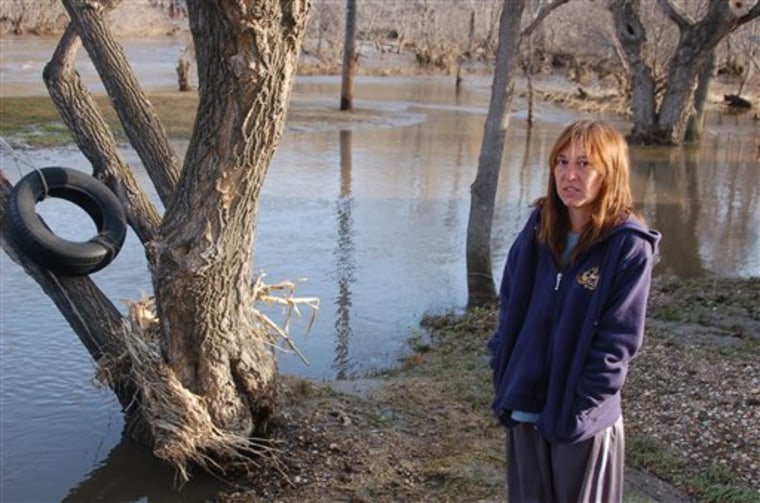The Des Lacs River in northwest North Dakota began a slow drop on Thursday, but authorities continued to monitor a weak and leaky dam protecting a neighborhood of about 30 homes.
Water levels had fallen more than a foot and the river had retreated from overflowed banks by about 3 feet compared to a day earlier, state and local officials said. Water behind the troubled Burlington Dam No. 1 was down by about a half-foot, said Todd Sando, North Dakota's state engineer.
"The good news is the dam is still there and it's holding steady," Sando said Thursday afternoon.
Flooding fears had eased elsewhere in North Dakota. A 30-mile stretch of Interstate 29 reopened north of Fargo after being closed by overland flooding, and to Fargo's west, officials said Valley City appeared poised to escape flooding from the Sheyenne River after raising its levees.
In Burlington, the strength of the 77-year-old dam has been suspect for decades but this year's flooding has spurred a need to either repair the dam or intentionally breach it by next spring, Sando said. "We're not going to leave it the way it is," he said.
The dam was built in the 1930s for irrigation and to provide water to homesteaders. Officials said the reservoir behind it no longer serves either purpose. Sando said draining the reservoir through a planned breach would relieve the pressure, but areas nearby might still be susceptible in flood years.
For now, authorities are watching the ailing structure with remote video cameras, fearing that any attempt to shore up the dam — or even walk across it — could cause it to collapse.
Fire Chief Karter Lesmann said authorities went door-to-door to about 30 homes on Wednesday night to warn residents that the dirt-and-rock dam could wash out. About one-fourth of the 200 people in immediate danger left, he said.
"We told them all to leave last night," Lesmann said Thursday. "We're not going to tell them again."
About 1,200 people live in Burlington, located about 8 miles northwest of Minot. Those in most immediate danger are on the west edge of town.
Warnings would be issued by a reverse 911 telephone system if the dam fails, Lesmann said.
Sando said any breach in the dam would be slowed by an adjacent railroad bridge before water would hit homes. He said no homes would be in danger of being swept away from the current.
An expected 3-foot wall of water would decrease to a foot high about a mile downstream, he said. The affected homes were well within a mile of the dam.
Jennifer Olonia and her husband, Matt, have remained at their home to try to save it from the bloated river, which has made its way into their basement. They worried about not being able to hear emergency telephone calls at their home because of noise from vacuum cleaners and sump pumps that are being used to suck water from their home.
"We're doing what we got to do," Jennifer Olonia said, filling a 10-gallon shop-vac every minute or so Thursday. "It's sludge, mud and yuck and more sludge, mud and yuck. It's a mess."
Olonia, a plumber, and his wife, a restaurant cook, have taken off work the past several days to save their home. Their heater has been swamped by floodwater so the couple has been running their oven with the door open for heat. Temperatures were in the mid-20s Thursday morning.
The river had receded several feet on the Olonias' property in less than a day, though a beaver was swimming in floodwater that had been their yard. Water that was bumper-high on their pickup Wednesday was just a few inches high on Thursday. They still worry a dam break could ruin their home despite sandbag fortifications.
"We're hoping we have enough clearance to handle a breach," she said. "But nobody knows."
Authorities had considered dropping half-ton sandbags from a National Guard helicopter to shore up the dam that stands between the endangered homes and the river. But state engineers said the sandbags could do more harm than good.
The Olonias and others are frustrated that nothing had been done to shore up the damaged dam that has been suspect for years.
"They should be doing something because something is better than nothing," Jennifer Olonia said.
In addition to irrigation, the 100-foot-long dam was built to provide water for homesteads, state records show. It was designed to hold water at a depth of 28 feet at its face.
"It was made to help people, now years later it's actually hurting us," Matt Olonia said. "And it looks like nobody is going to do anything about it expect let Mother Nature take its course."
